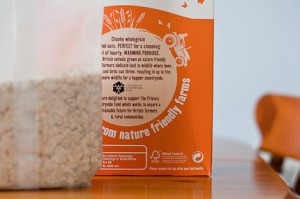There is quite a backlash about plastic at the moment, particularly in the media. Most of it relating to food as this is probably the most visible and to many people (myself included) the most pointless use of single use plastic. As I have mentioned before, the response of the supermarkets in the main has been to pledge to make their packaging recyclable and any reductions mentioned are usually about weight – which means they will make the packaging thinner, not change it altogether. It might even mean substituting plastic for other packaging such as glass.
However, I have recently heard several people complain that the general consensus of opinion is that all plastics are bad, whereas this, they say, is clearly not so. Plastic wrapped cucumbers are the proof, if any were needed, that plastic packaging reduces food waste (but then so does other types of packaging). And, with around 100kg of food wasted per person in the EU, we certainly need to reduce such waste. But, just because the shelf life of a half cucumber is extended by about a week, this doesn’t mean that it the answer. Back in the 1930s only a few percent of food was wasted. Since the 1950s plastic packaging use has increased and now about 33% of our food ends up uneaten. In fact, a recent report (1) has indicated that in some cases such as trimmed green beans, there is more food waste because the beans don’t naturally conform to the size requirements imposed by a plastic tray. More is cut off in production than would be if the beans were taken home in their natural state and prepared when required. Equally, food in packaging is of a fixed amount – if you are a household of one or two, then the chances are you will struggle to get through a whole bag before it goes off, increasing the likelihood of waste.
In Defra statistics from a couple of years ago the main reason cited for food wasted at home (where the majority of food waste apparently occurs) is, for fruit and veg because they were not used in time. (I think that a lot of this will be salads, but perhaps that’s because I don’t like lettuce, refuse to pay £1 for a bag of leaves that are simple to grow at home, don’t like the massive amount of packaging for just a small amount of nutrition or the idea of the chlorine added to keep them ‘fresh’ and they are prone to give you food poisoning.) But, for home made meals, and for meat, the biggest reason is that too much was cooked. Generosity or eyes bigger than tummies?
Tesco announced this month that they are going to remove the best before date from some of their fruit and veg in a bid to reduce food waste. However, these still remain sweating in their packaging, whereas the loose apples and potatoes et al don’t have any best before dates. It would be easier if they just got rid of all the packaging – but if they did that then there would be extra costs for someone on the checkout to weigh the food – or am I just being cynical? Perhaps supermarkets could start to co-operate and only provide some fruit and veg without the packaging option. After all, a few years ago you couldn’t buy apples in packs of six, so I am sure we can get used to putting them in a paper bag ourselves if that was the only choice.
